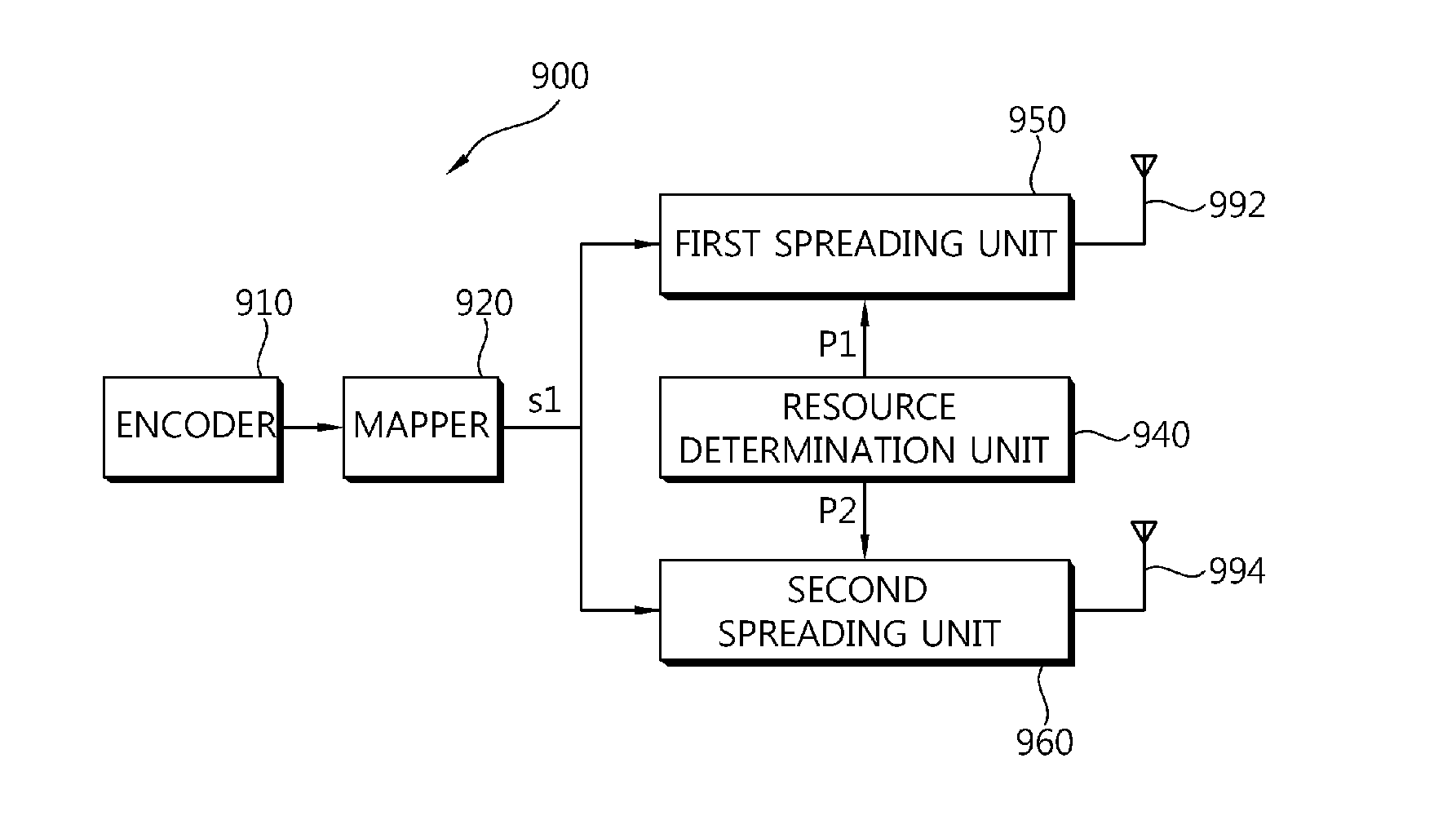Method and apparatus for transmitting HARQ ack/nack signal in multi-antenna system
a multi-antenna system and signal technology, applied in the field of wireless communication, can solve problems such as inefficiency in the execution of harqs
- Summary
- Abstract
- Description
- Claims
- Application Information
AI Technical Summary
Benefits of technology
Problems solved by technology
Method used
Image
Examples
first embodiment
[0110]FIG. 12 is a diagram showing a method of determining a plurality of resources according to the present invention. In this method, the second ACK / NACK resources are determined on the basis of a CCE index next to the lowest CCE index.
[0111]It is assumed that a CCE index 5 used to transmit a PDCCH for a downlink grant, from among CCE indices, is the lowest index. If the CCE aggregation level L is 1, a first ACK / NACK resource index P1 is determined on the basis of the lowest CCE index 5 as in the existing method, and a second ACK / NACK resource index P2 is determined on the basis of an index 6 subsequent to the lowest CCE index 5. The same principle is applied to CCE aggregation levels L=2, 4, and 8.
[0112]If the CCE index next to the lowest CCE index is larger than NCCE−1, the CCE index next to the lowest CCE index may be set to 0 by using cyclic shift. NCCE is the total number of CCEs. The same principle may be applied to later embodiments.
[0113]In other words, the first and secon...
second embodiment
[0117]FIG. 13 is a diagram showing a method of determining a plurality of resources according to the present invention. In this method, if the CCE aggregation level is greater than or equal to the number of required ACK / NACK resources, second ACK / NACK resources are determined on the basis of a CCE index subsequent to the lowest CCE index. If the CCE aggregation level is less than the number of required ACK / NACK resources, insufficient ACK / NACK resources are determined on the basis of a CCE index previous to the lowest CCE index.
[0118]It is assumed that a CCE index 5 used to transmit a PDCCH for a downlink grant, from among CCE indices, is the lowest index. If the CCE aggregation level L is 2, 4, or 8, a first ACK / NACK resource index P1 is determined on the basis of the lowest CCE index 5 as in the existing method art, and a second ACK / NACK resource index P2 is determined on the basis of a CCE index 6 subsequent to the lowest CCE index 5. If the CCE aggregation level L is 1, a second...
third embodiment
[0122]FIG. 14 is a diagram showing a method of determining a plurality of resources according to the present invention. In this method, if the CCE aggregation level is greater than or equal to the number of required ACK / NACK resources, a second ACK / NACK resource index is determined on the basis of a CCE index subsequent to the lowest CCE index. If the CCE aggregation level is less than the number of required ACK / NACK resources, a single antenna transmission mode is used.
[0123]It is assumed that a CCE index 5 of CCEs used to transmit PDCCHs is the lowest index. If the CCE aggregation level L is 2, 4, or 8, a first ACK / NACK resource index P1 is determined on the basis of the lowest CCE index 5 as in the existing method, and a second ACK / NACK resource index P2 is determined on the basis of a CCE index 6 subsequent to the lowest CCE index 5. If the CCE aggregation level L is 1, an ACK / NACK signal is transmitted through a single antenna using only first ACK / NACK resources because second ...
PUM
 Login to View More
Login to View More Abstract
Description
Claims
Application Information
 Login to View More
Login to View More - R&D
- Intellectual Property
- Life Sciences
- Materials
- Tech Scout
- Unparalleled Data Quality
- Higher Quality Content
- 60% Fewer Hallucinations
Browse by: Latest US Patents, China's latest patents, Technical Efficacy Thesaurus, Application Domain, Technology Topic, Popular Technical Reports.
© 2025 PatSnap. All rights reserved.Legal|Privacy policy|Modern Slavery Act Transparency Statement|Sitemap|About US| Contact US: help@patsnap.com



